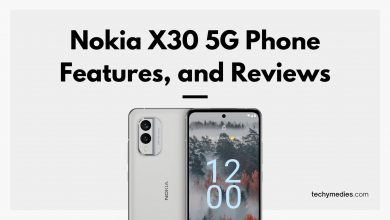MediaTek and Snapdragon Pros and Cons: A Comparison of the Main Differences

In the smartphone industry, it’s not easy to stand out. With the emergence of several new players, even established companies are facing difficulties getting noticed. In response to this competition, manufacturers are resorting to different strategies in order to distinguish themselves from their peers. One of these is going back to their roots and reviving older technologies in an attempt to lure consumers with nostalgia and ease of use. This is exactly what we’re witnessing in the latest mobile segment. After over a decade of operating on ARM architecture, Rockchip and Samsung Electronics released the first 64-bit chipset for smartphones — the gigahertz-class Exynos range. Similarly, MediaTek brought its own 64-bit processor architecture back as well — MT6755 Helio X25. Now that both these companies have branched out into other sectors as well (e.g., IoT), it only made sense that they would do so again in the mobile field as well. TWITTER
MediaTek MT6755
Since MediaTek is the first company to release a 64-bit chipset for smartphones, we’ll go straight to its latest Helio X25-based SoC — the MT6755. The X25 SoC is MediaTek’s first 64-bit processor and the first cellular solution based on ARM’s Cortex-A73 architecture. Although it’s a bit more than two years old, the chipset boasts a slew of advantages that make it well suited for modern usage. The largest of them is its power efficiency. The power consumption of the MT6755 is rated at 28% lower than that of the Snapdragon 845 — a flagship Qualcomm SoC that powers many flagships today. Furthermore, the SoC’s Helio X25 modem supports Category 18 connectivity, which means that it can deliver data rates of up to 1.4 Gbps.
Rockchip RK3399
Since the release of the Exynos processors, Samsung Electronics went on to release two R-series chipsets based on the company’s own Spiral 2.3 processor architecture. Now, yet again, Rockchip has taken the plunge and released the RK3399, a successor to its R-series. As far as specifications go, the RK3399 is similar to the Exynos 9810 in almost every way. The two key differences are the presence of the ARM’s Cortex-A73 architecture, and support for the next-generation LTE Category 18 connectivity (up from Cat 16). The RK3399 is available in two configurations — a single-core variant with a maximum clock speed of 2.3 GHz, and a double-core variant with a maximum clock speed of 2.3 GHz. It boasts the same Mali-G72MP18 GPU as the Exynos 9810, but contains 1.6 times the ARM’s CPU core count. Though this is one of the older processor architectures in the market today, it still comes with a host of advantages that should ensure its popularity.
Snapdragon 855
In the early days of SoC development, Qualcomm had to walk a fine line between the desire to provide the best possible experience to its customers, and the need to make money. For a while, the company failed to balance these two goals. However, all that changed with the release of the Snapdragon 855. The key to the success of the SoC lies in its ability to deliver flagship-grade experience at affordable prices. What’s more, this is possible while also staying ahead of game in terms of future-proofing — thanks to the company’s latest X20 modem. The Snapdragon 855 is a reimagined version of the company’s previous-generation flagship — the 845. The new chipset features the same Kryo 385 CPU core, but it now supports an LPDDR4X memory interface, which increases the overall memory bandwidth of devices powered by the SoC. Furthermore, the Snapdragon 855 benefits from the company’s latest X24 LTE modem. The new modem supports the widest range of frequencies and carrier aggregation technologies, which means that it will support LTE connectivity in more countries as time progresses.
Qualcomm’s next-gen SoC
Equipped with the above-listed components, you would expect the Snapdragon 855 to be a very powerful solution. But is it really? As you can see from the table above, the Snapdragon 855 has an advantage over its competitors in almost every respect — including the support for 64-bit computing, the CPU core count, GPU clock speed, and modem specifications. But is that all? Is it enough to make it the best chipset in the market? Of course not. If we take a look at the company’s next-gen 10nm SoC, we see its strategy in action. The upcoming Snapdragon 8150 is a combination of the 855 and 835. What this means is that it has all the best features of both processors, along with improved performance and battery life. The 8150 is the first processor to implement Qualcomm’s latest Kryo 260 CPU core, which is based on ARM’s Cortex-A75 architecture. The next-gen 10nm manufacturing process has allowed the CPU core to run at higher clock speeds, leading to a significant boost in performance.
Which chipset is right for you?
The above comparison makes it look like the Snapdragon 855 is the best chipset for almost every scenario. But is it really? The answer to that question depends on a few factors — including the price you’re willing to pay, the usage scenarios you’d like the device to handle, and your budget. If you’re willing to spend between $300 and $400, the Snapdragon 855 is a good option. If, on the other hand, you’re willing to spend $800 or more, you should definitely consider the Snapdragon 855.






Hi